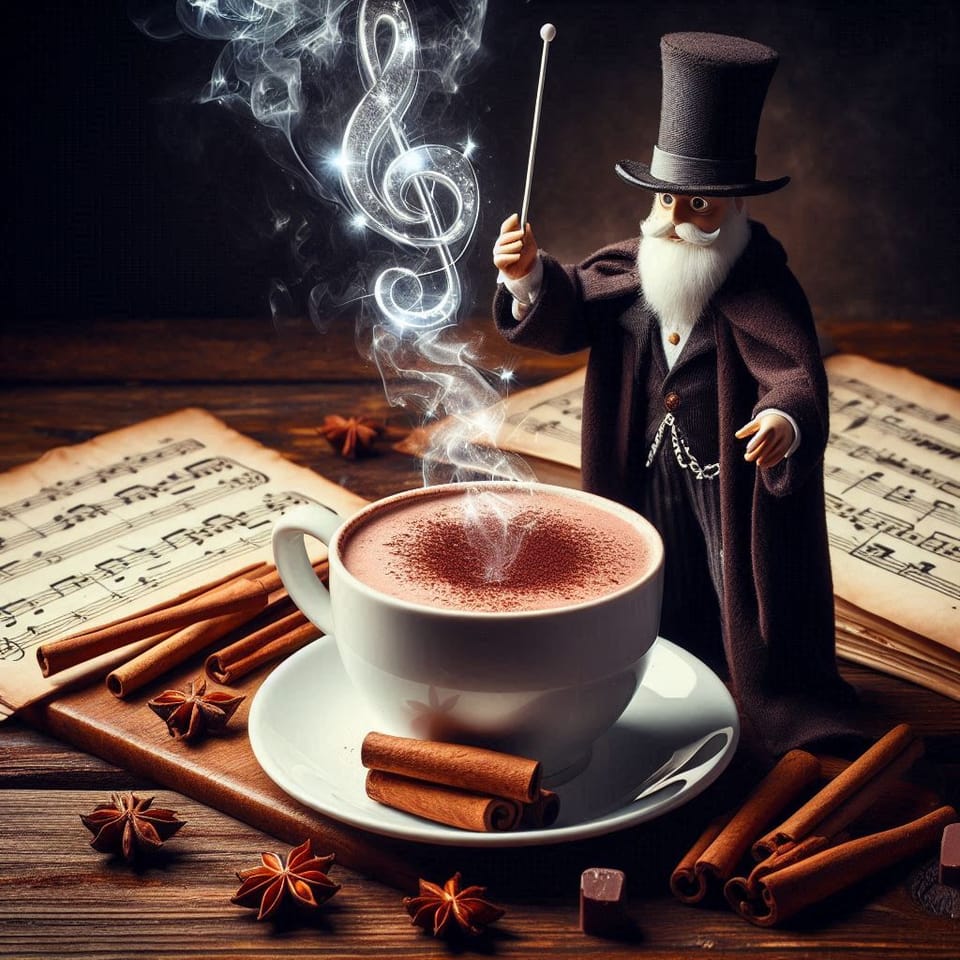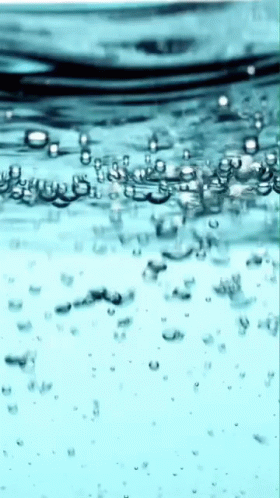The Hot Chocolate Effect: How Bubbles Bend Sound

—and Might Help Test Water Purity
Have you ever stirred a mug of instant hot chocolate or coffee and noticed the sound your spoon makes begins low and gradually rises in pitch? If so, congratulations—you’ve accidentally conducted an experiment in fluid dynamics and acoustics. The phenomenon is called the Hot Chocolate Effect, and it’s not only a charming kitchen curiosity—it’s also being repurposed in scientific research, including efforts to detect water impurities using musical instruments.
Let’s go deeper: from everyday mugs, to the mathematics of sound in bubbly liquids, to thumb pianos used as water sensors.

A Sound that Rises: What’s Happening?
When you stir powdered cocoa or instant coffee into hot water, the action introduces thousands of tiny air bubbles into the liquid. These microbubbles do more than make your drink frothy—they change the way sound waves travel through the liquid.
Compressibility and the Speed of Sound
In a homogeneous liquid, the speed of sound \(v\) is given by: \[v = \sqrt{\frac{K}{\rho}}\]
Where:
- \(K\) = Bulk modulus of the fluid (resistance to compression)
- \(\rho\) = Density of the fluid
Air bubbles drastically reduce the effective bulk modulus \(K_{eff}\), because air is far more compressible than water. Even if they occupy a tiny fraction of the volume, their presence increases the overall compressibility of the mixture.
As a result, the speed of sound in the bubbly drink drops, sometimes by orders of magnitude.
So when you tap the cup with a spoon, the sound wave travels more slowly, and the resonant frequency you hear is lower.
From Physics to Pitch: Why the Sound Rises
As time passes, the bubbles rise and pop, reducing the compressibility. The effective bulk modulus increases, and the speed of sound rises. Therefore, so does the frequency of the sound you hear.
Let’s bring in the resonance: \[f = \frac{v}{\lambda}\]
Where:
- \(f\) = frequency
- \(v\) = speed of sound in the liquid
- \(\lambda\)= wavelength (assumed fixed for the container)
Since \(\lambda\) doesn’t change (same mug, same tapping), any increase in \(v\) results in an increase in \(f\)—the pitch goes up.
This is what Frank Crawford discovered and documented in his 1982 paper. He noticed that even subtle changes in bubble content made a measurable difference in pitch over just a few seconds.

Beyond Cocoa: Crawford's Broader Work
In his follow-up paper, Hot Water, Fresh Beer, and Salt (1984), Crawford generalized the effect to all sorts of bubbly or effervescent fluids.
He also showed that dissolved gases in hot water (or fresh beer) outgas when heated, forming microbubbles just like with cocoa powder. Even small amounts of dissolved salt or sugar change the physical properties of the liquid, subtly altering its density and viscosity, which also shift the speed of sound.
The Mathematics of a Bubbly Mixture
To be a little more technical: the effective speed of sound in a bubbly liquid can be modelled using Wood’s equation, a classic result from acoustics in fluid mixtures: \[\frac{1}{\rho_{mix}v^2_{mix}} = \frac{\alpha}{\rho_{g}v^2_{g}}+ \frac{1-\alpha}{\rho_{l}v^2_{l}}\]
Where:
- \(\rho_{mix}\), \(v_{mix}\) : density and speed of sound in the mixture
- \(\rho_{g}\), \(v_{g}\) : density and speed of sound in the gas (air bubbles)
- \(\rho_{l}\), \(v_{l}\) : density and speed of sound in the liquid
- \(\alpha\) : void fraction (volume fraction of gas)
Because \(v_{g}\ll v_{l}\) and air is much more compressible than water, even a small \(\alpha\) (say, 0.001 or 0.01) can significantly lower \(v_{mix}\).
This leads to dramatic reductions in sound speed and pitch, all from a bit of froth.
This formulation is based on foundational acoustic theory as detailed in A. Wood's classic textbook A Textbook of Sound (Bell, London, 1941), which remains a cornerstone reference in the physics of sound propagation in mixtures.

Kalimbas and Science: Music Meets Measurement
Jump forward to 2018, when Heran C. Bhakta and colleagues published a study in ACS Omega titled Musical Instruments as Sensors. Inspired by the Hot Chocolate Effect, they explored whether simple acoustic instruments—like a thumb piano, or kalimba—could detect physical differences in liquids.
They attached a container of liquid to the vibrating tine of the instrument and then measured changes in pitch and damping (how fast the vibration faded) when plucked.

What They Found:
- Adding salt, sugar, or detergent changed the mass loading and damping on the vibrating tine.
- These changes caused measurable shifts in frequency and resonance decay.
- The differences were so distinct that a smartphone mic and basic signal analysis could classify liquids with high accuracy.
Just like the spoon-in-mug experiment, the principle relies on how liquids respond to vibration, governed by acoustic and material properties.
Applications: Can This Detect Water Contamination?
Potentially, yes.
This line of research could lead to cheap, portable, non-invasive tools for testing water quality in low-resource settings:
- Detecting dissolved solids or salinity in agriculture
- Differentiating safe vs. contaminated water
- Monitoring chemical changes in industrial fluids
All without expensive sensors—just clever physics and acoustics.
Try It Yourself: A Kitchen Lab
You don’t need a lab or a kalimba to experience this. Here’s a fun home experiment:
Materials:
- Mug of very hot water
- Instant coffee or cocoa powder
- Metal spoon
- Quiet room
Steps:
- Add powder and stir vigorously.
- Tap the bottom or side of the mug with the spoon.
- Listen: the sound is low at first, then rises in pitch over about 15 seconds.
That’s the Hot Chocolate Effect. You're hearing bubble dynamics, wave speed, and fluid compressibility play out in real time.
From Mugs to Models: Physics Everywhere
What makes the Hot Chocolate Effect so delightful is how intuitively observable it is. No equipment, no equations required—just a warm drink and a curious ear.
But lurking beneath that playful bubbling is a rich world of physics:
- Fluid compressibility
- Acoustic resonance
- Thermodynamics of dissolved gases
- Mathematical modelling of wave propagation
Whether you're studying water purity with a thumb piano or just sipping your morning mocha, you’re engaging with the same principles.
It’s a small reminder that physics is not just in textbooks. It’s in your kitchen, in your coffee, and in the songs of plucked metal tines—if you know how to listen.
References
- Crawford, F. S. (1982). The Hot Chocolate Effect. American Journal of Physics, 50(5), 398.
https://doi.org/10.1119/1.12886 - Crawford, F. S. (1984). Hot Water, Fresh Beer, and Salt: What Liquid Bubbles Do to Sound. American Journal of Physics, 52(4), 1033-1036.
https://doi.org/10.1119/1.13605 - Wood, A. (1941). A Textbook of Sound. Bell, London.
- Bhakta, H. C., et al. (2018). Musical Instruments as Sensors. ACS Omega, 3(12), 18142–18148.
https://doi.org/10.1021/acsomega.8b01673
Member discussion